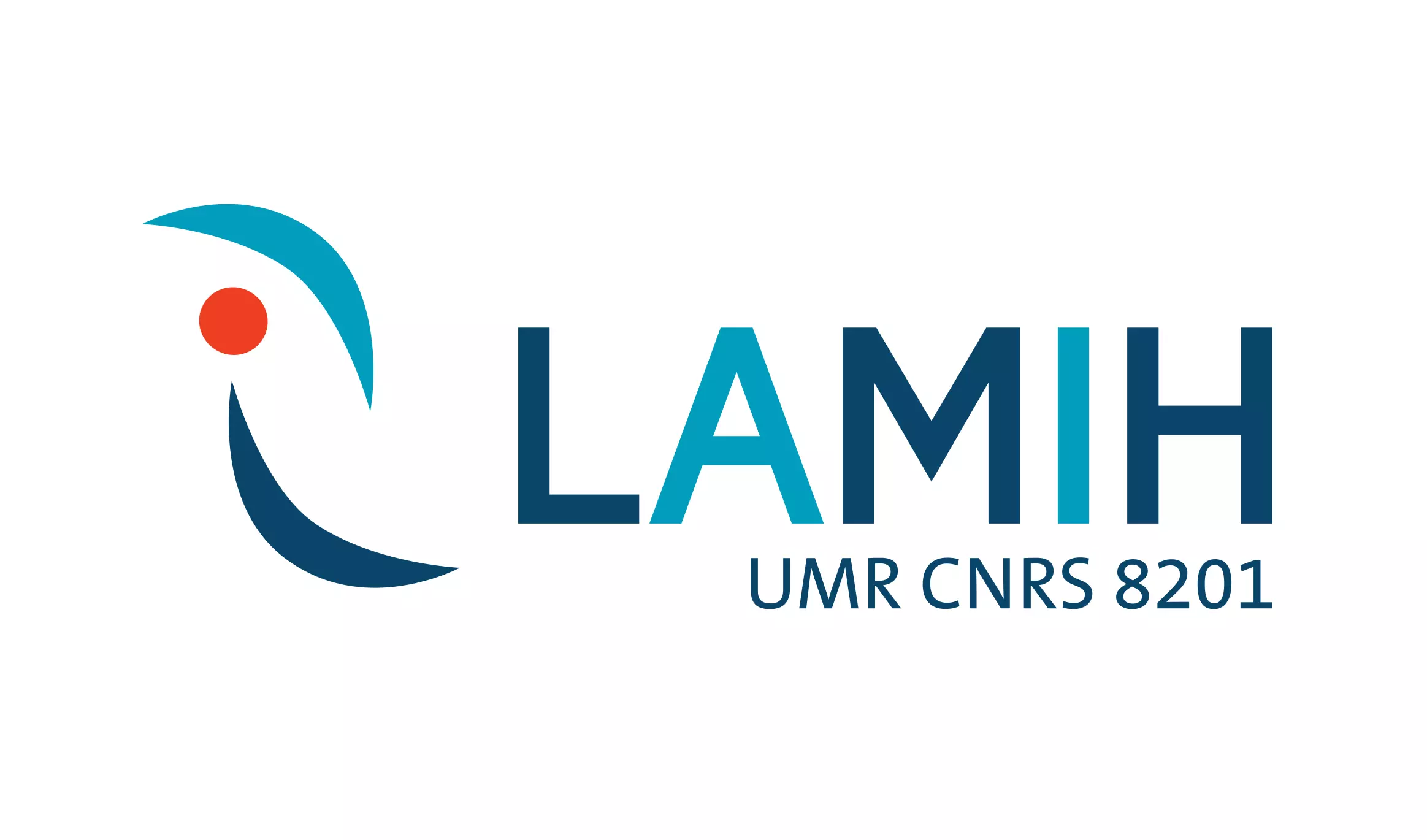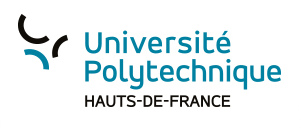-
Chemistry and Materials
-
Digital World and Robotics
-
Energy and Environment
-
Transport and Mobility
Laboratoire d’Automatique, de Mécanique et d’Informatique Industrielles et Humaines (LAMIH)
Research unit
The LAMIH UMR CNRS 8201 (Laboratoire d'Automatique, de Mécanique et d'Informatique industrielles et Humaines) is a joint research unit between the Université Polytechnique Hauts-de-France and the CNRS.
LAMIH is a multidisciplinary and recognized research player in the fields of transport and mobility: non-polluting vehicles, intelligent transport, driver assistance, eco-driving, lightening structures, transport logistics, mobility for all and intelligent mobility. He has a strong competence in everything that touches man in interaction with technical systems.
LAMIH has a large network of industrial partners, operators, contractors and suppliers in the fields of ground and air transport as well as logistics and health.
As a multidisciplinary laboratory, the LAMIH is capable of both a global understanding of an industrial problem and also of studying a particular technical or scientific problem related to computing, Automatic, mechanical and human and life sciences.
LAMIH intervenes on all levels of TRL, with a core activity related to applied engineering research that leads to the development of industrial prototypes. LAMIH has several patents under joint ownership with industrialists.
-
Laurent Dubar
Director
Le Mont Houy
59300 Valenciennes Cédex 9

Effectif
Effectif total : 275
Personnel de recherche : 135
Personnel d'appui à la recherche : 52
Skills
• Automatic: Research activities focus on the design, control and monitoring of systems (autonomous, man-machine, industrial or service socio-techniques).
• Mechanics: Research focuses on understanding and mastering interactions at interfaces and microstructural evolutions in order to improve the integrity and functionality of mechanical, thermal and energy systems. The originality of the department lies in the complexity of the physical phenomena studied by considering the “severe conditions” (rapid dynamics, turbulence, heat transfers, etc.) and the phenomena at the interfaces.
• Informatics: The originality of the IT department is to have the necessary skills in a global approach: at the computational level (optimization and simulation), at the software architectures (distributed vs. centralized) and hardware (embedded systems) or in relation to the human (human-machine interaction, knowledge modelling, decision support).
• Human and Life Sciences (SHV): This SHV Department brings together researchers from different disciplines dealing with the human aspects of movement. It includes researchers who examine disorders and disturbances of motor function for the purpose of optimizing motor function and researchers who focus on the study of cognitive, emotional and motor components of decision-making.
LAMIH covers the entire Transport and Security, Mobility and Disability chain, from theoretical and methodological research (TRL bas) to innovation including the creation of start-upsup and via research based on major industrial groups but also on SMEs (medium/high TRL). It also relies on a set of experimental platforms that are sometimes unique in France and are an indispensable asset for conducting quality scientific activities.
LAMIH is a member of the Research Federation of the CNRS Transports Terrestres & Mobilité 3733, of the Carnot ARTS Institute and is a privileged partner in the development of the IRT Railenium.
Example(s) of projects
• The joint laboratory in Operational Research and Informatics in Transport, Mobility and Logistics (ROI-TML) co-directed with the Interuniversity Research Centre on Enterprise Networks, Logistics and Transport (CIRRELT). This joint laboratory has the CNRS label under the status of IRP (International Research Project)
• The SWITlab Joint Laboratory (with MG Valdunes group MA-STEEL and LAMCube) 🡭
• SurferLab Joint Laboratory (with Bombardier Transportation and Prosyst) 🡭
• The LAMIH UMR CNRS 8201 also leads the European INTERREG ParkinsonCom project. 🡭
• LAMIH UMR CNRS 8201 is a partner in the ELSAT2020 project 🡭
• The LAMIH UMR CNRS 8201 has created several startups, in particular:
In the medical field: MediWAT developing medical devices for on-board walking analysis, 🡭
In the field of transport: MainProactive is specialized in the supervision, security and support for the proactive maintenance of architectures built on the Internet of Things. 🡭
Example(s) of publications
• Improving CRPD Analysis for EDF Scheduling: Trading Speed for Precision The 2022 ACM/SIGAPP Symposium on Applied Computing (SAC'22)
• Is treadmill walking biomechanically comparable to overground walking? A systematic review Gait & Posture
• Patchworking: Exploring the code changes induced by vulnerability fixing activities Information and Software Technology
• ParkinsonCom : Logiciel d'aide à la communication pour une meilleure inclusion sociale des personnes atteintes de la maladie de Parkinson Rapports intermédiaires du projet Interreg ParkinsonCom (partenaires UMONS et DOS) (livrable L1 : 30/09/202, L2 : 30/09/2020, L3 : 02/02/2021, L4 : 02/02/2021, L5 : 31/03/2021, L5 : 24/06/2021, L6 : 30/09/2021, L7 : 05/01/2022, L8 : 28/01/2022)
All publications can be found here: 🡭
Collaborations/Partners/Scientific clients
International: International research institutions and entities
Collaborations/Partners/Private Clients
Applications sectors
- IT / software
- Automotive industry
- Transportation / Logistics
- Electronic / photonics
- Mechanics
- Automation, machinery / Robotics
- Science / Research
- Railway industry
Services provided
Integrate the Human into the loop by guaranteeing performance
Ensure dynamic performance for large, heterogeneous cps
Enrich and improve human-to-CPS interaction strategies
Develop new management paradigms for Human-CPS systems developed in a sustainable context
Mechanics: Intelligent interactions and coupling
Optimisation of mass and heat transfers under severe conditions
Predicting fluid-solid interactions around complex interfaces
Multi-scale dynamic behaviour of architectural materials and structures
Alternative numerical methods for dynamics under extreme loads
Modelling of interfaces based on multi-scale physical knowledge
Computing: Adaptability and Intelligence:
Robustness, Adaptation & Optimization in Complex Systems
Powerful Architectures, Data and Services for Mobile &Embedded Systems
Design and evaluation of interactive, adaptive and multimodal systems
VHS: Maintaining and improving human mobility
Identification of markers for early degradation of mobility
Understanding of underlying mechanisms
Design and validation of innovative biomechanical devices
From lab to practice: clinical or field applications
Consulting services
Affiliated institutions / organisations
Partner institution(s)
Groups/Networks/Federations
Doctoral schools
Competitive cluster
Regional strategic areas of activity
- Chemistry and Materials
- Coatings and surface treatments
- Industrial processes engineering, efficient processes
- Textiles, composites, materials
- Digital World and Robotics
- Advanced production systems, industrial maintenance
- Artificial intelligence, image processing, data science
- Internet of things, cloud computing and big data
- Robotics, cobotics, Human-Machine interaction
- Energy and Environment
- Low-carbon combustion (biofuels, hydrogen, new technologies)
- Transport and Mobility
- Access to mobility, travel modes
- Decarbonized vehicles, electromobility
- Intelligent and autonomous vehicles
- Intelligent transportation systems
- Maintenance and supervision
- Multi-modality, flow management, infrastructure and logistics
- Reduction of pollution and energy consumption
- Robustness and reliability





